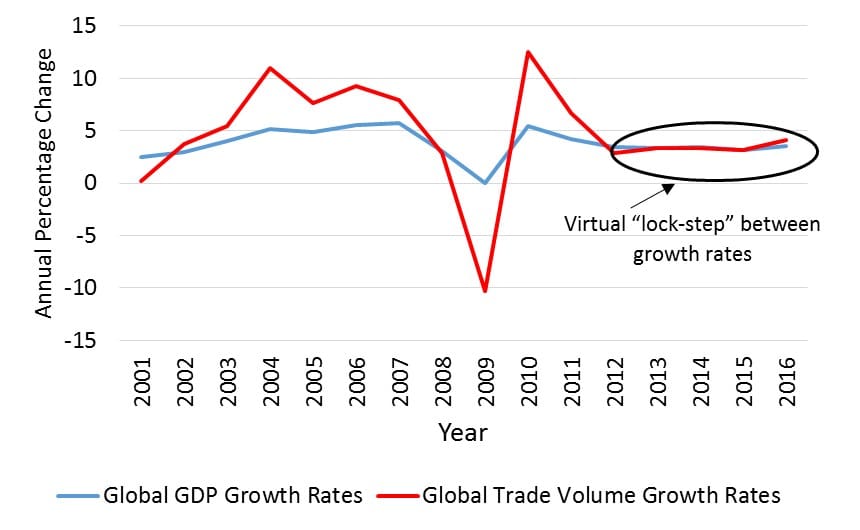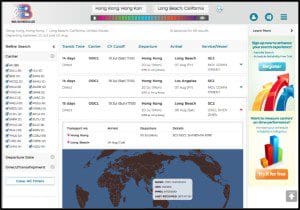 I can only imagine what it must be like to be at sea during a major storm. When you can barely see beyond the bow of the ship, when extreme wind and waves threaten to throw you off course – or worse, sink you – it’s understandable that long-term thinking can get chucked overboard like so much extra ballast. It’s all about plowing through the next wave. And the one after that, and the one after that, until you’ve managed to steer your way through to blue skies and calm waters.
I can only imagine what it must be like to be at sea during a major storm. When you can barely see beyond the bow of the ship, when extreme wind and waves threaten to throw you off course – or worse, sink you – it’s understandable that long-term thinking can get chucked overboard like so much extra ballast. It’s all about plowing through the next wave. And the one after that, and the one after that, until you’ve managed to steer your way through to blue skies and calm waters.
It’s an apt metaphor for ocean shipping these past many months. Every day has felt like a major squall, from natural disasters closing down manufacturing facilities and ports, to container shortages and labor issues, to rising costs and the ongoing pandemic. It has been the opposite of smooth sailing, and many companies understandably have fallen back almost exclusively on short-term thinking. How do I get shipment X out of Long Beach? Can I stack two more levels of containers on every chassis? Can I secure a dedicated ship to see me through near-term shortages?
But the fact of the matter is, industry leaders who want to avoid crashing their business on the shoals need to balance the daily hand-to-hand combat with some serious, long-term planning. They need to rally their organizations to think strategically about how ocean shipping is fundamentally changing, and marshal the company’s intellectual and financial resources for long-term adjustments.
We may never have a ‘new normal,’ but a new reality is shaping up
When you look back 18 months to the start of the pandemic, the first shock waves to hit global supply chains were all related to demand. Empty grocery store shelves. Toilet paper hoarding. A lack of basic necessities. What wasn’t given due consideration was the impact of the demand shock upstream, through the supply chain, right to the suppliers.
Instead, the short-term, reflexive thinking was, Let’s get everyone producing a lot more. That led – inevitably – to a surge in goods, but also to an inability to get all those goods into scarce containers, or to get the containers onto ships, or to get the ships through clogged up ports, or to get the ships unloaded. And the list goes on.
The first new reality? Demand volatility is here to stay. So let’s plan for it. (I’d argue that had Walmart or Home Depot been thinking big picture and long term, they would have chartered their own ships 10 months ago!)
The second new reality: Equipment constraints and labor constraints are intertwined — and both will be with us for a while. While labor issues tend to garner more headlines, ocean shipping is dealing with a combination of equipment constraints and labor constraints, and you cannot solve one without the other. You can put more containers on a chassis, but if there aren’t enough people to move the goods, it’s of no use. Likewise, labor can’t do its thing when there are severe equipment shortages, and rectifying those shortages requires difficult-to-source raw materials.
The third new reality: Consolidation is inevitable. It was recently reported that one of the world’s biggest container logistics companies, Maersk, will only handle cargo from direct shippers, cutting out freight forwarders. And while no official announcement had been made as of the writing of this article, it’s clear that “Maersk is giving a greater priority to those that will take door-to-door or will use more of Maersk’s integrated services.”
What are the implications of the No. 1 carrier stopping its dealings with even a portion of the world’s freight forwarders? It seems to me small freight forwarders, in particular, are at risk. And should a significant number of small freight forwarders go out of business, who are the smaller importers going to work with to secure capacity? I’m of the opinion that the companies that control the equipment are in the strongest position. But what are the long-term implications of these kinds of fundamental shifts in the power dynamics of ocean shipping?
A “planful” way forward
Move from short-term to long-term scenario planning. The companies that will fare better over the long haul are those that think through the bigger-picture implications of these seismic shifts, so they can devise new systems and workflows — even new business models — to minimize repercussions up and down their supply chains. This includes reevaluating resource allocation. It means making smart investments in everything from network modeling to ocean trade lane analysis, from securing equipment to potentially rebalancing nearshoring and offshoring strategies.
Factor in big-picture industry changes. Scenario planning should take into account significant changes to the industry landscape. Which industries will survive? Who is going to go out of business? What new industries will pop up? When people talk about self-driving trucks, whatever their opinion on the technology, they tend to overlook the industries that might be disrupted. If fewer humans are driving the trucks, what does that mean for the insurance industry that used to insure those humans, as just one example?
Take full advantage of modern technology. There’s no question the pandemic radically accelerated digital transformation initiatives across the supply chain industry. The companies that will survive and thrive going forward will continue to leverage the latest and best technologies to remediate both the day-to-day challenges and plan for the long term. Push your tech partners to ensure that your solutions are underpinned by the highest-quality data that can be securely shared across other systems and with your network. Insist on state-of-the art forecasting and decision tools. Demand an ever-increasing pace of integration and innovation.
What ocean shipping needs is what former General Electric Chairman and CEO Jack Welch used to preach: “Anybody can manage short. Anybody can manage long. Balancing those two things is what management is.” That’s never been more true; more long-term thinking is ocean shipping’s best path out of stormy seas.
Matt Elenjickal is the Founder and Chief Executive Officer of FourKites. He founded FourKites in 2014 after recognizing pain points in the logistics industry and designing elegant and effective systems to address them. Prior to founding FourKites, Matt spent 7 years in the enterprise software space working for market leaders such as Oracle Corp and i2 Technologies/JDA Software Group. Matt has led high-impact teams that implemented logistics strategies and systems at P&G, Nestle, Kraft, Anheuser-Busch Inbev, Tyco, Argos and Nokia across North America, Western Europe and Latin America. Matt is passionate about logistics and supply chain management and has a keen sense for how technology can disrupt traditional silo-based planning and execution. Matt holds a BS in Mechanical Engineering from College of Engineering, Guindy, an MS in Industrial Engineering and Management Science from Northwestern University, and an MBA from Northwestern’s Kellogg School of Management. He lives in Chicago.




















